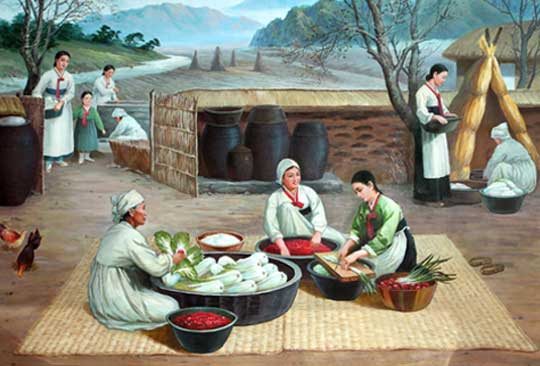Kimchi-making Custom
It is a traditional dietary custom of the Korean people who make kimchi by processing bok choy, turnip and other vegetables with seasonings and salted fishes.
As a typical lactic fermented dish of the Korean nation, kimchi has a unique taste and high nutritive value.
It was originally called “kumchae” which means that the dish is as precious as gold and, later, it became kimchi with a phonetic change.
In Korea there are clear distinctions between four seasons. In autumn the Korean people cultivated various kinds of vegetables on a large scale in order to regularly eat fresh vegetables from October to March next year, the period unfavourable for the growth of plants. And they began to prepare kimchi with the vegetables so as to use it as a subsidiary food in winter. It gave birth to the custom of making kimchi.
The custom deals with a story that people, when making kimchi, share their experiences and taste the dish together with their neighbours or colleagues.
Most spectacular in the custom is the scene of collectively making kimchi for the winter in November every year.
People help each other in making various kinds of kimchi in every season. This serves as an opportunity to promote cooperation in families, villages and workplaces and contribute to the social unity.
The kimchi-making custom was inscribed on the UNESCO’s Representative List of ICH of Humanity.
